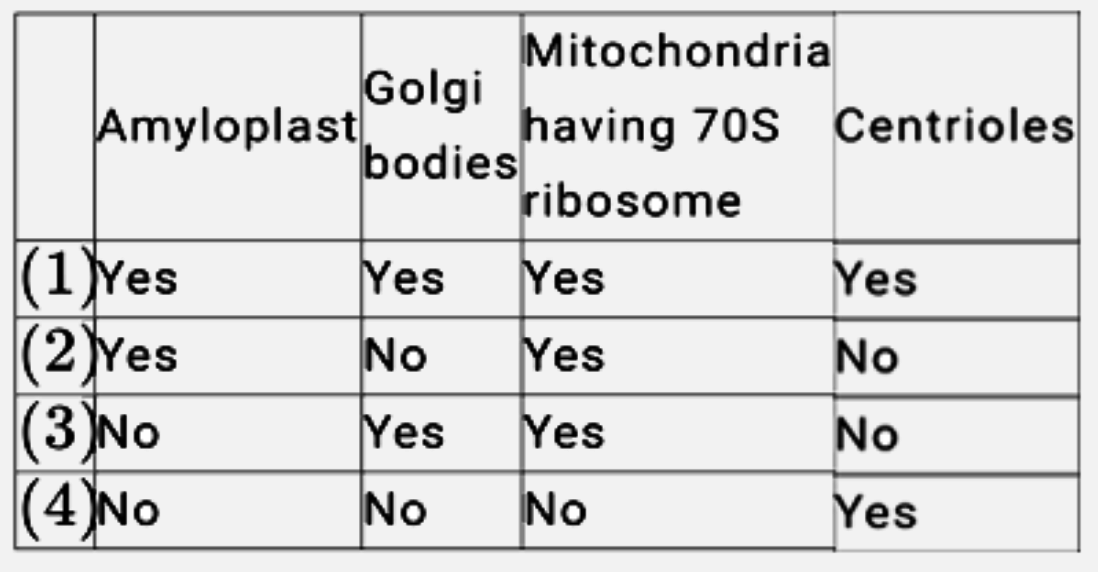How mitosis differs in animal and plant cells?
Step-by-Step Solution:
1. Definition of Mitosis:
- Mitosis is a type of cell division that results in two daughter cells, each having the same number of chromosomes as the parent cell. It is an equational division.
2. Presence of Centrioles:
- In animal cells, centrioles are present. These are barrel-shaped structures that align at right angles to each other and play a crucial role in cell division.
- In plant cells, centrioles are absent.
3. Cytokinesis Mechanism:
- In animal cells, cytokinesis (the division of the cytoplasm) occurs through a process called cleavage furrow formation. This involves the contraction of a ring of actin and myosin filaments, which pinches the cell membrane inward.
- In plant cells, cytokinesis occurs through the formation of a cell plate. This process involves the phragmoplast, an array of microtubules that guide vesicles containing cell wall materials to the center of the cell, forming a new cell wall.
4. Direction of Cleavage:
- In animal cells, the cleavage furrow proceeds in a centripetal manner, meaning it moves from the outer edges of the cell towards the center.
- In plant cells, the cell plate formation occurs in a centrifugal manner, meaning it starts from the center and expands outwards towards the lateral walls of the cell.
5. Role of Structures:
- In animal cells, the contractile ring, made of actin and myosin II, is essential for defining the cleavage furrow.
- In plant cells, the phragmoplast, along with vesicles and actin filaments, serves as a framework for the formation of the cell plate.
Summary of Differences:
- Centrioles: Present in animal cells; absent in plant cells.
- Cytokinesis Method: Cleavage furrow in animal cells; cell plate formation in plant cells.
- Cleavage Direction: Centripetal in animal cells; centrifugal in plant cells.
- Key Structures: Contractile ring in animal cells; phragmoplast in plant cells.
- Mitosis is a type of cell division that results in two daughter cells, each having the same number of chromosomes as the parent cell. It is an equational division.
- In animal cells, centrioles are present. These are barrel-shaped structures that align at right angles to each other and play a crucial role in cell division.
- In plant cells, centrioles are absent.
- In animal cells, cytokinesis (the division of the cytoplasm) occurs through a process called cleavage furrow formation. This involves the contraction of a ring of actin and myosin filaments, which pinches the cell membrane inward.
- In plant cells, cytokinesis occurs through the formation of a cell plate. This process involves the phragmoplast, an array of microtubules that guide vesicles containing cell wall materials to the center of the cell, forming a new cell wall.
- In animal cells, the cleavage furrow proceeds in a centripetal manner, meaning it moves from the outer edges of the cell towards the center.
- In plant cells, the cell plate formation occurs in a centrifugal manner, meaning it starts from the center and expands outwards towards the lateral walls of the cell.
- In animal cells, the contractile ring, made of actin and myosin II, is essential for defining the cleavage furrow.
- In plant cells, the phragmoplast, along with vesicles and actin filaments, serves as a framework for the formation of the cell plate.
- Centrioles: Present in animal cells; absent in plant cells.
- Cytokinesis Method: Cleavage furrow in animal cells; cell plate formation in plant cells.
- Cleavage Direction: Centripetal in animal cells; centrifugal in plant cells.
- Key Structures: Contractile ring in animal cells; phragmoplast in plant cells.
Topper's Solved these Questions
Similar Questions
Describe the structure of a typical cell along with important functions of its various components. Explain salient differences between animal and plant cell and eukaryotic and prokaryotic cell.
View SolutionSelect the features that are common to animal and plant cells ?

View SolutionWhile in mitosis, the daughter cells resemble each other and alos the parent cell, in meiosis they differ not only fom parent cell in having half the number of chromosomes. But also differ among themselves qualitatively in genetic consitution due to
View SolutionThe given diagram shows a stage during mitotic division in an animal cell:

In what two ways is mitotic division in an animal cell different from the mitotic division in a plant cell?
View SolutionIllustrate only a plant cell as seen under electron microscope. How its different from animal cell?
View SolutionName the branch of science dealing with the study of structure and function of animal and plant cell.
View SolutionEnumerate two differences between plant and animal cells.
View SolutionGive differences between the following:
Animal cell and plant cell
View SolutionPlants differ from animals in having
View SolutionHow does cytokinesis in plant cells differ from that in animal cells?
View Solution
